Home 〉 Countries
Countries
Ethiopia
Overview
Ethiopia’s location gives it a strategic position as a jumping off point in the Horn of Africa, close to the Middle East and its markets. Ethiopia is landlocked, bordering Eritrea, Somalia, Kenya, South Sudan, and Sudan, and has been using neighboring Djibouti’s main port for the last two decades for its international trade. However, with the recent peace agreement with Eritrea, Ethiopia is set to resume accessing the Eritrean ports of Assab and Massawa, as well.
Ghana
Overview
Ghana’s rapid growth (7% in 2017-19) was halted by the COVID-19 pandemic, the March 2020 lockdown, and a sharp decline in commodity exports with an overall GDP as low as 0.4%. The economic slowdown had a considerable impact on households. The poverty rate is estimated to have slightly increased from 25% in 2019 to 25.5% in 2020. Ghana’s economy has effectively rebounded from the COVID-19 induced slowdown. Growth is estimated to have reached 4.1% in 2021, is expected to be broad-based in 2022 and projected to reach 5.5% in 2022.
Kenya
Overview
Kenya has a broadly stable and resilient financial sector comprising a number of stakeholder groups – from commercial banks, brokers and insurance companies to pension funds, savings credit cooperatives and fintechs, among other players. The country’s financial system stands out in a global emerging market context for several reasons. For example, since the launch of mobile money in 2007, Kenya’s payments ecosystem has matured into a global success story, supported by innovation-friendly policies, strong connectivity infrastructure and a dynamic cohort of homegrown technology entrepreneurs.
Morocco
Overview
Capital markets in Morocco have gone through a series of reforms over the past decades. The banking sector in Morocco is highly diversified and extensive in its intermediation functions. Eight commercial banks (Attijariwafa Bank (AWB), Banque Populaire du Maroc (BPM), Banque Marocaine du Commerce Exterieur (BMCE), Banque Marocaine du Commerce et de l’Industrie (BMCI), Societe Generale Maroc (SGM), Credit Agricole du Maroc (CAM), Credit Du Maroc (CDM) and Credit Immobilier et Hotelier (CIH) dominate the banking sector in Morocco.
Nigeria
Overview
In 2020, Nigeria experienced its deepest recession in two decades, but growth resumed in 2021 as pandemic restrictions were eased, oil prices recovered, and the authorities implemented policies to counter the economic shock. Nigeria was highly vulnerable to the global economic disruption caused by COVID-19, particularly due to the decline in oil prices. Oil accounts for over 80 percent of exports, a third of banking sector credit, and half of government revenues.
Sudan
Overview
Sudan is the third largest country in Africa with a total area of 1,882,000km2 and 42.8 million inhabitants. The country is sparsely populated. Sudan is geographically located at the crossroads of Sub-Saharan Africa and the Middle East and stretches across the Red Sea. Sudan shares borders with seven countries including Libya and Egypt to the North, Chad to the West, the Central African Republic to the South-West, South Sudan to the South, Ethiopia to the South-East and Eritrea to the East.

